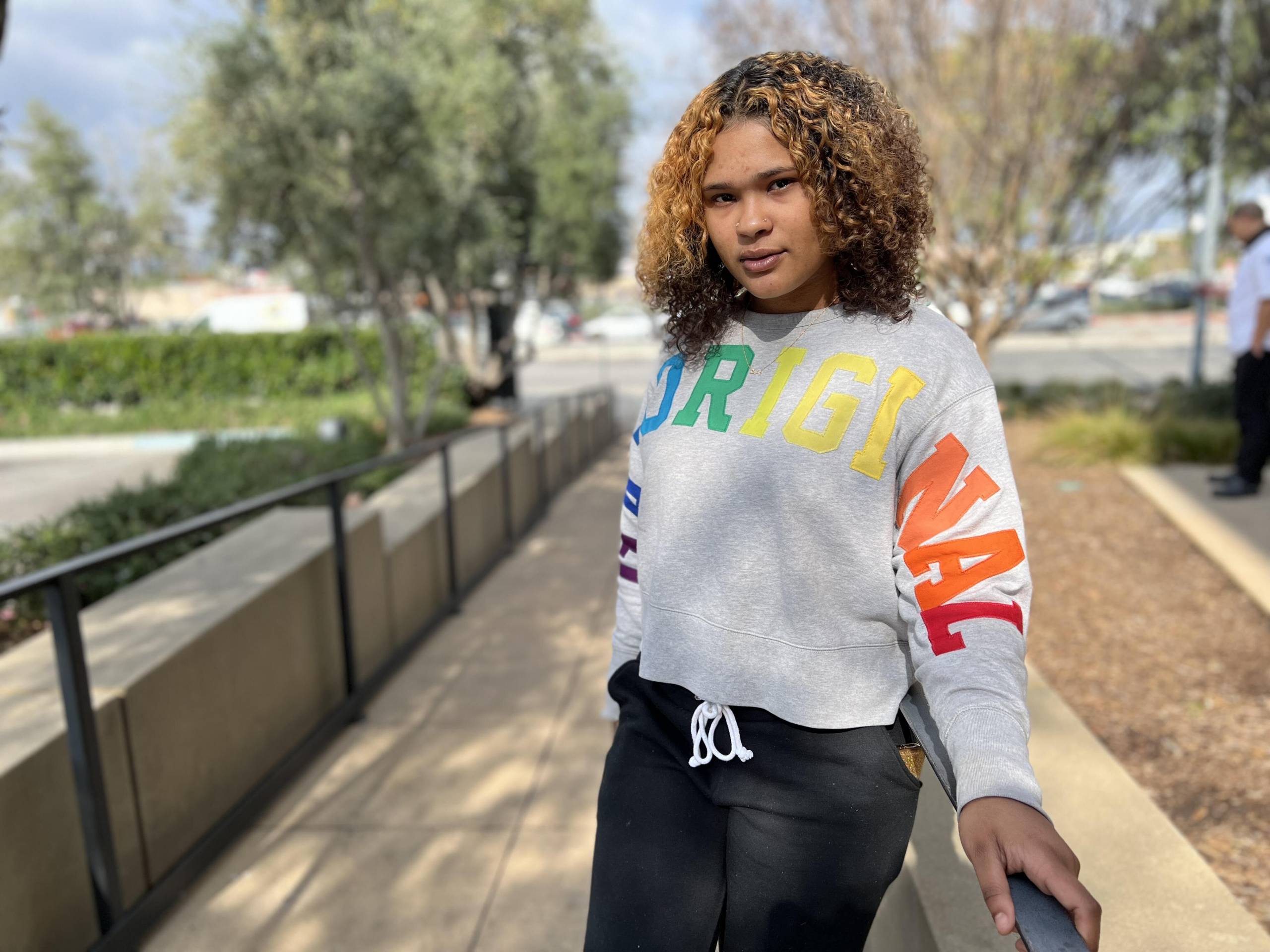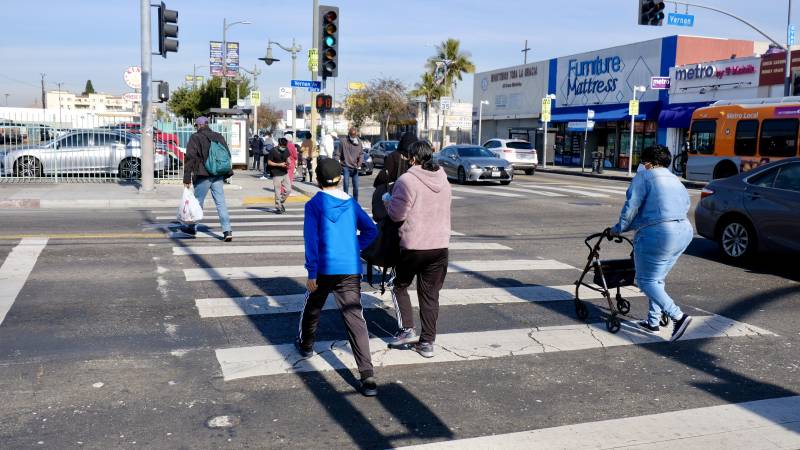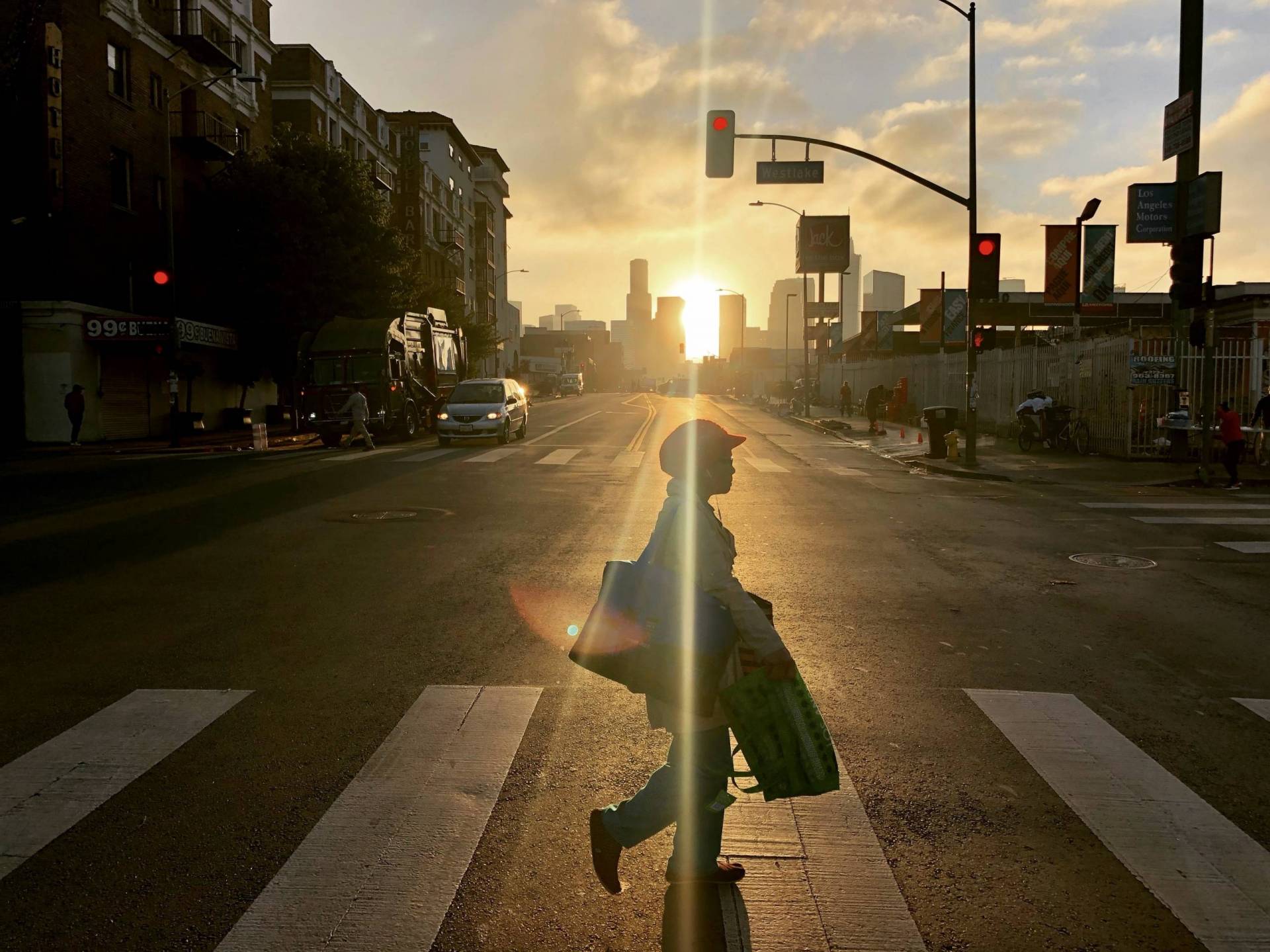The worst day of Koi Finley’s life happened last January when she learned her father had just been struck and killed by a hit-and-run driver in downtown Los Angeles during his regular weekend bike ride. He was 46.
“That’s the craziest thing that anyone can tell you, that your father was literally hit by somebody,” Finley said. “‘Somebody killed your dad.'”
More than a year later, Finley, 19, is still grappling with the senselessness of her dad’s death, and the understanding that it is part of a larger, ongoing tragedy playing out on California’s streets.
There were an estimated 3,246 traffic fatalities across the state during the first nine months of 2021, a 17% increase from the same time period the previous year, according to just-released National Traffic Highway Safety Administration data.
The uptick was even sharper in Los Angeles, where Finley’s father was one of nearly 300 non-motorists killed in traffic accidents in 2021 — an increase of 20% from 2020. Of those deaths, 132 people were pedestrians.

“Every single one of those numbers is a tragedy,” said LA Department of Transportation General Manager Seleta Reynolds. “If we cannot get people from A to B and guarantee that they are safe, and that when somebody leaves in the morning, they’ll come home safely at night, then we haven’t fulfilled sort of a basic responsibility.”
Reynolds says her most important tool to reduce traffic injuries and deaths is a program called Vision Zero.
Inspired by traffic safety initiatives in Europe, and adopted by LA in 2015, the initiative has set the ambitious goal of eliminating all traffic-related fatalities in the city by the year 2025.



